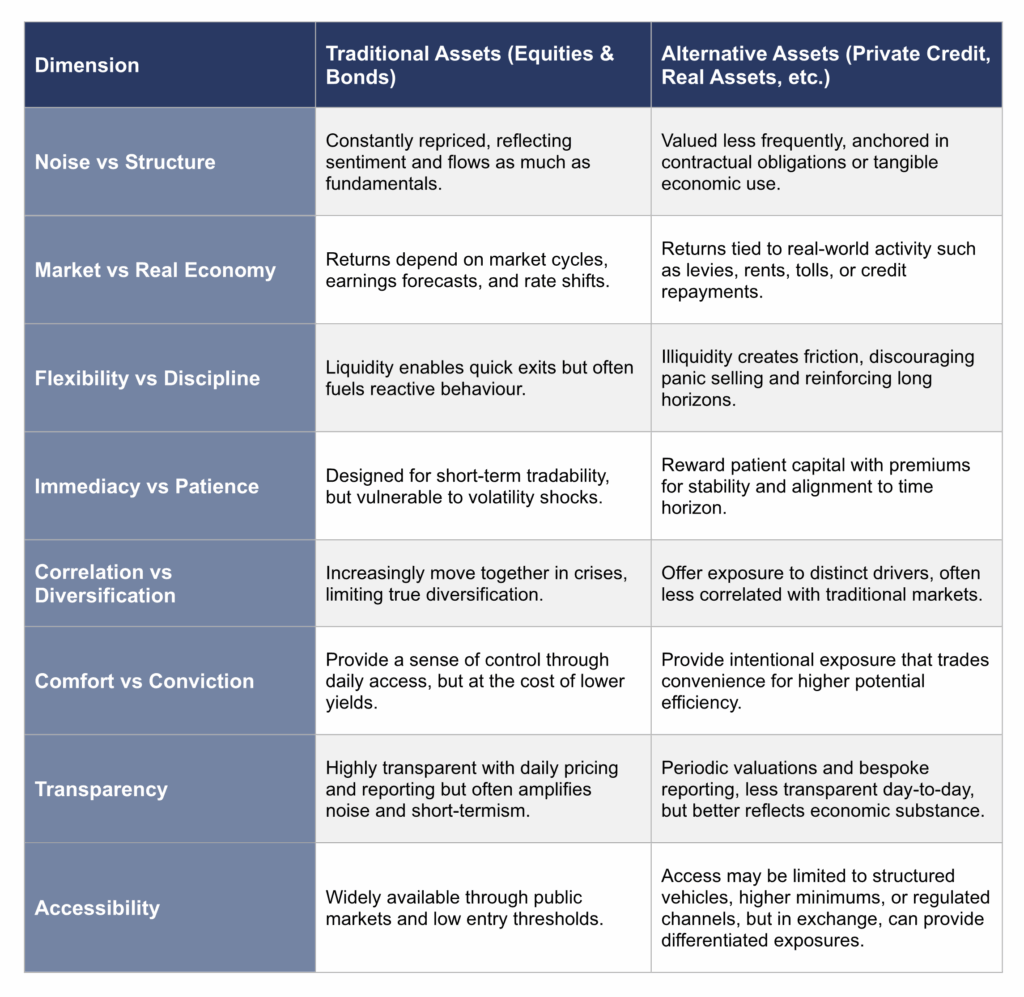Alternatives are often described simply as “anything outside equities and bonds.” But that definition undersells them. Alternatives span private credit, private equity, hedge funds, infrastructure, commodities, and real assets. They are characterised by lower correlation to traditional markets, meaning they behave differently when stocks and bonds move in tandem.
Crucially, alternatives are designed to do things traditional assets struggle with when used in isolation:
- Diversify risk by drawing returns from independent economic drivers rather than market cycles, thereby lowering overall portfolio beta.
- Generate income through contractual or asset-backed income streams.
- Provide inflation protection, as many are linked to real assets or floating-rate structures.
- Capture long-term premiums by rewarding patience through complexity or illiquidity.
This combination makes alternatives less about being “alternative” and more about being essential to a balanced portfolio in today’s environment.


